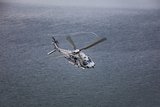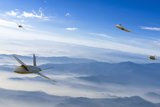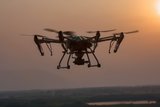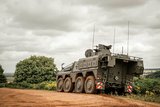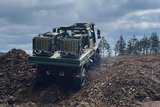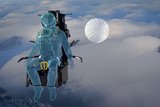‘Never done before’: tiltrotor technology and the future battlespace
Tiltrotor technology is transforming frontline operations, providing advances in speed, range and endurance that have reshaped tactics, techniques and procedures (TTPs). As the U.S. Army turns to the V-280 Valor for its Future Long-Range Assault Aircraft (FLRAA) requirement, Frank Lazzara, Bell’s director of FLRAA Sales and Strategy, outlined the future of revolutionary maneuver.
FLRAA is expected to enter the Army’s fleet in 2030. The new aircraft builds on the legacy of the V-22 Osprey, which has been a key platform for the U.S. Marine Corps (USMC), U.S. Air Force (USAF) and U.S. Navy (USN) for more than 20 years, based on a combined fleet of more than 400 aircraft that between them have accumulated over 750,000 flight hours.
Bell emphasizes FLRAA’s ability to take off at short notice, with its speed, range and strategic lift deployment options increasing operational flexibility for missions including utility, medevac and assault. The new aircraft differs from the V-22 in the use of non-rotating engines, meaning they remain in place while the rotors and drive shafts tilt, offering benefits in maintenance and beyond. FLRAA will be able to travel twice as fast and twice as far as the current fleet.
Deep experience
Lazzara served for seven years in the U.S. Army as a scout pilot, followed by almost 20 years in the USAF. He flew the Osprey during his Air Force career and was a CV-22 squadron commander for Air Force Special Operations Command (AFSOC), giving him a deep insight into the applications and importance of tiltrotor platforms.
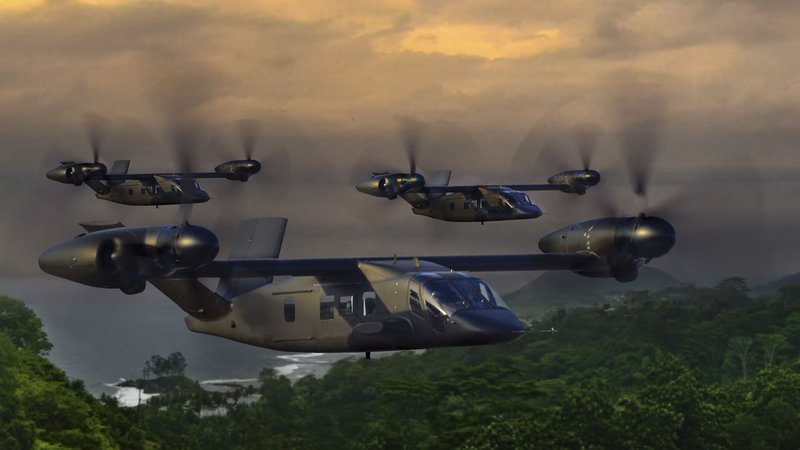
He pointed to two major benefits the U.S. Army can expect from the technology. The first is at the tactical level: tiltrotors can help the force reshape its air envelopment TTPs, similar to the impact the helicopter had on operations in the Vietnam War. The tiltrotor could pave the way to a reawakening for assault aviation in the army, he said, something that the other services have experienced through the V-22.
‘This kind of capability gives them a way to imagine doing things in a way they've never been able to do before,’ he added.
The second benefit is the capability to perform dispersed operations, a vital aspect on the modern battlefield. There is a demand to fly over long distances in the same amount of time that current assets take on much shorter journeys, including over water. With tiltrotor technology, armed forces can ‘operate as far away from a known threat as possible while still having the reaction time to exploit opportunities that arise’, Lazzara explained.
Tiltrotor technology also dramatically expands the ability to support medium-lift operations, not just in terms of distance covered but also in capacity. ‘It's the ability to provide increased reaction time or increased decision-making time for the supported commanders, the maneuver force,’ Lazzara noted, whether in assault, utility or beyond.
There are obvious applications for tiltrotor technology across various missions. For example, Lazzara pointed to medevac, in which aircraft like FLRAA provide ‘unmatched’ capability. Because the platforms land and take off like conventional helicopters, ‘you get in there quickly and close to the point of injury’. Additionally, tiltrotors cut the need for transloading injured personnel across different modes of transport, he noted.
The payload capacity and reconfigurable nature of the aircraft means it will likely ‘become a bigger part of the conversation with regard to launched effects and battlefield command and control,’ Lazzara added. ‘It can get out there further, operate in front of the maneuver force, get those sensors extended even further and then transmit information.’
There is also a wide range of missions that have not yet been imagined. For example, Lazzara pointed to the potential for army special operations users to utilise tiltrotor platforms in the future. ‘I look forward to how they tailor it into their mission sets, not only their worldwide quick-reaction missions, but all the other missions that they do. I think they'll use it in ways that probably haven't been conceived of yet as they hone their TTPs.’
Engineering approach
Lazzara highlighted the modular open systems approach (MOSA) and model-based systems engineering (MBSE) used in the development for FLRAA, ‘which lay down a much stronger foundation than we've ever seen in the past from a program or an acquisition of this size’.
The MOSA and MBSE concepts are central to the emphasis on maintainability, sustainability and cost, crucial focuses for the army in an aircraft procurement of this scale. Their in-built adaptability seeks to drive risk from the process, ensuring the decades-long program is fit for its future.
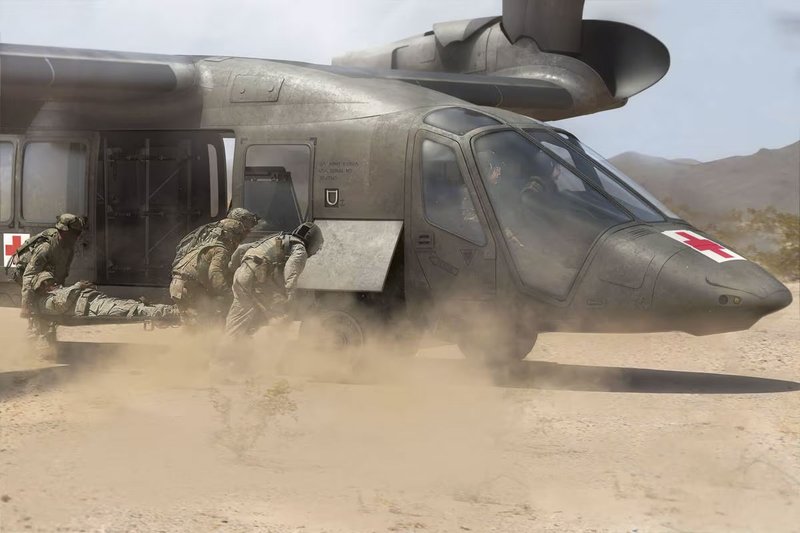
The army ‘has done an exceptional job’ at mandating that such requirements are built into the design, Lazzara added: ‘As a taxpayer, I'm pleased to see very demanding but reasonable requirements on the maintainability.’
Bell was well positioned to adapt to these needs based on lessons learned from the V-22: for example, the use of non-rotating engines on FLRAA reduces complexity. Other innovations also remove complications and costs, such as the aircraft’s straight wing or its new proprotor blade design. By reducing complexity, these design decisions drastically improve the manufacturing time for these items in addition to improving maintenance in the field.
‘These are the things that drive maintenance,’ he said, noting that the lessons learned are now being applied back to the V-22 through its Nacelle Improvement program.
Wide potential
Tiltrotor technology offers applications used across all the US armed services. The USMC, for instance, is the number one user of tiltrotor platforms in the world, Lazzara noted, expressing confidence that FLRAA or a derivative will be in the picture should a need for new aircraft of this type emerge in the future.
Additionally, the USN ‘is now really starting to appreciate what tiltrotor does, certainly for the carrier onboard delivery (COD) mission. There could also be growing options for the USAF in future, he said, potentially in the airlift mission.
‘If you imagine certain theaters of operation and contested movement, anti-access and area denial, large expanses of unnavigable terrain on the ground or large expanses of water, the benefits of runway independence are clear. There are a lot of compelling points,’ Lazzara said. ‘I know that we would love to have that challenge given to us by the air force.’
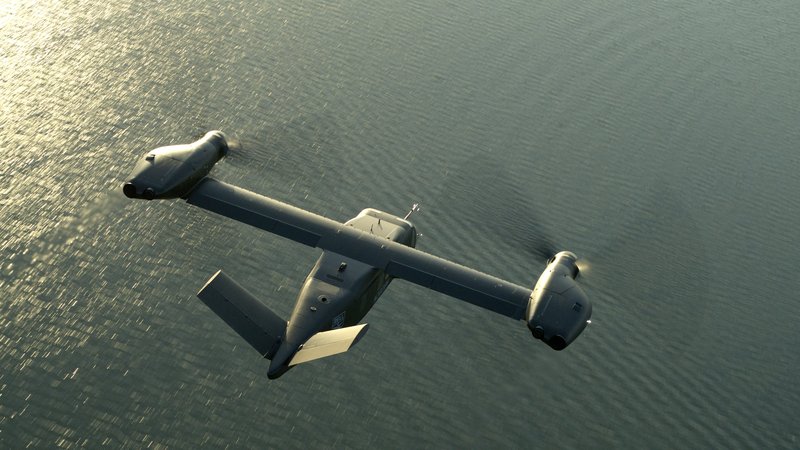
He further noted that Bell has seen ‘enthusiastic engagement’ from numerous countries on tiltrotor technology, with the V-22 being acquired by Japan. It has also seen interest in tiltrotor platforms, specifically in FLRAA, from other countries, including Australia, the UK, the Netherlands, Canada, Italy, Japan and the Republic of Korea: ‘We are security cooperation partners. Nobody's getting into a conflict on their own and we all need to be able to support each other. The closer we are aligned in capability, the better.’
Autonomy and adaptability
Turning to future developments, autonomy is a growing focus across aviation, including for FLRAA and tiltrotors more widely, Lazzara said. ‘The U.S. Army has an eye on some level of autonomy right out of the gate. I think MOSA would be a huge part of that,’ with platforms designed to adapt to any future needs.
Nonetheless, it will always be important to have a person in the loop, although not necessarily in the aircraft. ‘You can do a lot of missions unmanned, but the “human curiosity” part of missions like ISR is critical – I think those things combined move this technology down the road,’ Lazzara added.
As threats evolve, the desire to send capability far forward without risking the lives of crew members is increasing, he said, pointing out that Bell is working on a range of hybrid approaches across its programs – not just in tiltrotors – that could enhance missions in areas such as medevac.
‘These could get us to higher speeds, higher altitudes and quicker response times with fewer crew on board, if any crew at all,’ he continued. ‘They could still go in and rescue a downed airman or soldier or do a casualty evacuation from a very remote or hard-to-reach, isolated area,’ while reducing the risk to personnel.
There will also always be a very delicate balance between capability and weight, providing the ability to lift as much as possible while flying as fast as possible. ‘This is the Holy Grail of aviation,’ Lazzara said.
Lessons learned from the V-280 Joint Multi-Role Technology Demonstrator (JMR TD) and FLRAA will be combined with experience from the V-22 to take the next generation to another level, in terms of material advancements, the powerplant, flying in degraded visual environments, crew workload and beyond, he noted.
While it is impossible to predict the future missions and demands made of any aspect of military technology, including tiltrotors, Lazzara is confident that the MOSA and MBSE approach puts the FLRAA in a strong position to adapt to any new requirements.
There will always be a need for platforms that ‘are faster, go further, are more efficient, cheaper and more maintainable – and we are always improving on those aspects,’ he concluded.
More from Industry Spotlights
-
![The future is here: Sixth-gen air dominance]()
The future is here: Sixth-gen air dominance
How RTX is equipping the military airspace – for today’s fleet and tomorrow’s fight.
-
![De-Risking the Future: Manufacturing Certainty for Unmanned Systems]()
De-Risking the Future: Manufacturing Certainty for Unmanned Systems
How strategic manufacturing partnership solves the industrialisation triad — Scale, Compliance and Cost — for hyper-growth defence tech innovators.
-
![Battlefield mobility, made in the UK]()
Battlefield mobility, made in the UK
How does Britain ensure that we can preserve the lives of our soldiers and allies – now and in the future – with homegrown innovation and resilient domestic manufacturing? At Pearson Engineering, we are proud to be a central part of the answer to this increasingly important question.
-
![Strengthening Baltic defence capabilities]()
Strengthening Baltic defence capabilities
How Latvia is bolstering its territorial defences, industrial capacity and international cooperation with Dynamit Nobel Defence’s SKORPION2 Remote Mining System.
-
![Barco’s vision to trust: from past to future]()
Barco’s vision to trust: from past to future
Barco’s story is one of constant evolution enabling more immersive, reliable, and future-ready training experiences.
-
![How are next-generation ejection seats helping pilots when they need it most?]()
How are next-generation ejection seats helping pilots when they need it most?
The ACES 5 ejection seat from RTX’s Collins Aerospace introduces new, innovative and patented technologies to help save lives.









